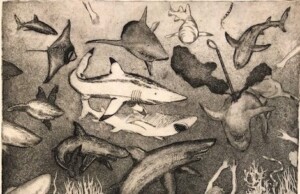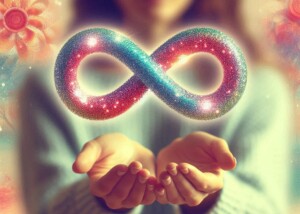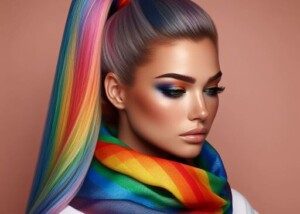The percentage of autistic people who have art talent is much higher than the percentage of gifted artists among neurotypicals.
Why is that? Or is this just an illusion?
Ever since my diagnosis of Autism Spectrum Disorder in March 2022, I’ve attended numerous events for autistic individuals.
This includes social events just for autistic adults.
It wasn’t long before I noticed something very interesting: Quite a few people on the Spectrum had art talent.
I swear, the percentage has to be around 20 percent.
I heavily doubt this is the percentage of skilled artists in the neurotypical population.
Prior to my ASD diagnosis, I had hardly met any artists outside the context of college art classes and certain jobs that attracted artists.
Then suddenly, once I began hanging with other Autistics, I was meeting artists in droves.
Artistic, Autistic – Same Thing
I began drawing at five or six. All throughout childhood I was drawing.
This included rendering various textures such as shiny wood, silk, fur, brush bristles, hair, bone, muscle fibers – all with my favorite media: a ballpoint pen, pencil, charcoal, thin marker, rapidograph.
I also created many drawings using colored markers (mostly in my teens), and to this day I’m sick over the fact that I’d never had the foresight to save any of these dazzling illustrations of flowers.
The zinc-plate etching of sharks in a feeding frenzy, at the top of this post, is my work during college.
I’ve never even freelanced as an artist. Illustrating and coloring were highly personal hobbies, and after graduating from college, I had “outgrown” my love of creating artwork.
And in the many years that followed, well into middle age, I have rarely met other artists.
I’d say that the bulk of them were at the two major newspapers that I had worked at, in their display advertising composing departments, and also (quite expectedly) in college art classes.
Well of course you’ll find a higher percentage of art talent in these two contexts, even if they’re all neurotypical.
However, it’s quite possible that a few, along the way, were actually autistic, but these settings were not “for autistic people” or “autism socials,” either. We can assume that the majority were NT.
Composing departments of major newspapers are an “in” for aspiring artists fresh out of college or whose graphic design business isn’t bringing home enough bacon.
Many employees in the two big composing departments I’d worked in had some form of art talent, usually illustration.
However, in the general population, not the composing department population or in college art classes, I’ve hardly ever met anyone with artistic skills – over decades, even.
Once I began participating in events for autistic people, including resource fairs and pizza meetups, doggone, the artists were coming out of the woodwork.
I’m convinced that autism can make someone highly skilled at art, at a higher prevalence rate, than whatever it is that makes any given neurotypical a talented artist.
There’s obviously some kind of connection between being autistic and being artistic.
Certainly, many Autistics can’t even draw a straight line.
But again, I’m talking about percentages.
I’ve met more artists with autism since my diagnosis, than I have met artists in my entire life in the NT population, other than in the composing departments and at my college’s “art building.”
So if you ever find yourself among a bunch of Autistics, don’t ask, “Who here has taught themselves how to code?”
Instead, ask, “Who here can draw?”
I’m sure a lot of hands will go up!
What the Research Says
Research suggests that a higher percentage of autistic individuals display exceptional artistic abilities compared to the general population, often due to differences in perception and cognition.
A study published in the Journal of Autism and Developmental Disorders (Pring et al., 2012) found that autistic kids were significantly more likely to excel in realistic drawing than their neurotypical peers.
This is utterly fascinating because when I began drawing (around five or six), I never drew stick figures.
I went straight for actual faces, arms, torsos and legs. See the drawing below that I created at age six.
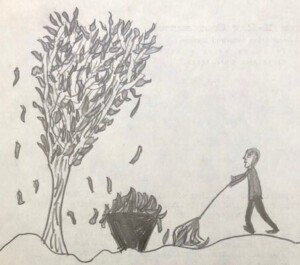
I sat down one day at age 6 and drew this out of my head. ©Lorra Garrick
Autistic kids excelling in realistic depictions, more so than their NT peers, may be linked to enhanced visual processing skills and attention to detail, common traits in ASD.
(I also think it could be due, in part, to a tendency towards literal thinking. The literal thinker is not likely going to draw lines to represent a torso, arms and legs.)
According to Mottron et al. (2006), many autistic people demonstrate heightened perceptual functioning, allowing them to notice and replicate fine visual details with remarkable accuracy.
My innate skills always got better as I got older. Certainly, by the time I was 12, for instance, I would’ve applied much more realism and detail to depict a tree and a man raking leaves.
My art talent grew as I grew. It plateaued in college, when I was full-grown.
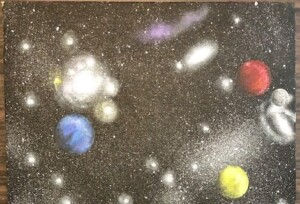
An acrylic painting I created in young adulthood. ©Lorra Garrick
Additionally, autistic individuals often focus intensely on specific interests, which can support the development of technical artistic skills over time.
Example: During my hyperfixation on sharks, I was always drawing them in the margins of my notebooks during school classes, rapidly accruing the ability to illustrate these apex predators.
 Lorra Garrick has been covering medical and fitness topics for many years, having written thousands of articles for print magazines and websites, including as a ghostwriter. She’s also a former ACE-certified personal trainer. In 2022 she received a diagnosis of Level 1 Autism Spectrum Disorder.
Lorra Garrick has been covering medical and fitness topics for many years, having written thousands of articles for print magazines and websites, including as a ghostwriter. She’s also a former ACE-certified personal trainer. In 2022 she received a diagnosis of Level 1 Autism Spectrum Disorder.
.

